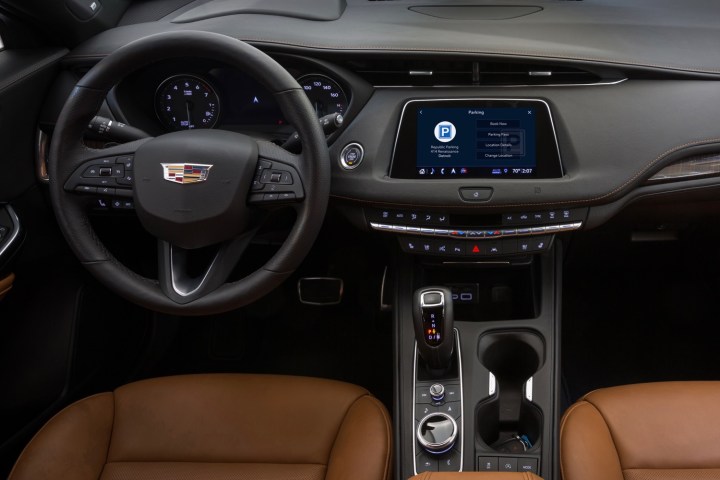 Driving can be fun, but parking usually isn’t. Finding a parking space in crowded urban areas can be difficult. Heading straight to a parking garage can help avoid that, but it’s hard to know how much it will cost in advance. Cadillac and ParkWhiz hope to streamline things with a new feature that allows drivers to find and pay for parking from their dashboards — well before they arrive at their destinations.
Driving can be fun, but parking usually isn’t. Finding a parking space in crowded urban areas can be difficult. Heading straight to a parking garage can help avoid that, but it’s hard to know how much it will cost in advance. Cadillac and ParkWhiz hope to streamline things with a new feature that allows drivers to find and pay for parking from their dashboards — well before they arrive at their destinations.
The new feature is part of General Motors Marketplace, the in-dashboard ecommerce platform that already allows you to order pizza from a Chevrolet or make Yelp reservations from a Buick. The new parking feature allows drivers to sync Marketplace with a ParkWhiz account, giving them access to thousands of spaces in more than 250 United States cities, according to Cadillac.
Drivers need to create a ParkWhiz account either online or through the ParkWhiz mobile app. That means setting up a payment method, and confirming vehicle details like the model and license plate number. Once that’s set up, drivers can locate available spaces using their vehicles’ dashboard touchscreens, reserve a spot near their destination, and pay for it.
General Motors launched Marketplace in 2017 across all four of its U.S. brands — Cadillac, GMC, Buick, and Chevrolet. It’s compatible on most GM vehicles beginning with the 2017 model year. Cadillac claims to have nearly 325,000 Marketplace-compatible vehicles on the road.
GM has hailed Marketplace as a breakthrough in convenience, but it also shows how the largest U.S. automaker is trying find new sources of revenue beyond car sales. Marketplace allows GM — and partner companies like ParkWhiz, Domino’s, Yelp, and Shell — to monetize the time people spend in their cars. It also lets GM tap into the transactions its customers may be making using smartphones. In-car ecommerce platforms could also become big business if self-driving cars take off. Autonomous driving will turn every vehicle occupant into part of a massive captive audience for marketers.
Whether its GM Marketplace, Audi’s traffic-light information system, or Nissan’s experimental “invisible-to-visible” tech, connectivity is becoming more of a priority for automakers. But like any technology, the way it is used will determine whether it is ultimately beneficial to people.


